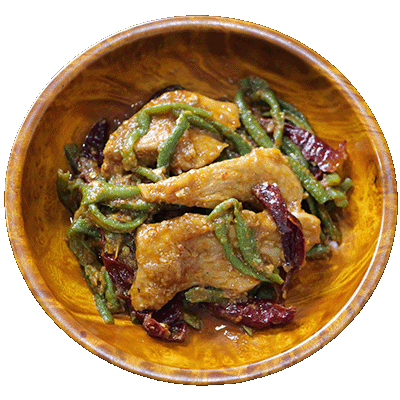Phaksha Paa is a flavorful and spicy pork dish that showcases the bold and hearty flavors characteristic of Bhutanese cuisine. This dish is made with fresh tender pork slices cooked with fiery red chilies, usually radishes or another vegetable with good umami, and a blend of traditional spices. Often served with Bhutanese red rice, Phaksha Paa is a comforting and satisfying meal that is loved by locals and visitors alike.


